How to Go Really Big in AI:
Strategies & Principles for Distributed Machine Learning
Eric Xing
epxing@cs.cmu.edu
School of Computer Science
Carnegie Mellon University
Wei Dai, Qirong Ho, Jin Kyu Kim, Abhimanu Kumar, Seunghak Lee, Jinliang Wei, Pengtao Xie, Yaoliang Yu, Hao Zhang, Xun Zheng
Acknowledgement:
James Cipar, Henggang Cui,
and, Phil Gibbons, Greg Ganger, Garth Gibson
1
�
Machine Learning:
-- a view from outside
2
�
Inside ML …
• Graphical
Models
• Nonparametric
Bayesian Models
• Regularized
Bayesian Methods
• Large-Margin
• Deep Learning
• Sparse Coding
• Sparse Structured
I/O Regression
• Spectral/Matrix
Methods
• Network switches
• Infiniband
• Network attached storage
• Flash storage
• Server machines
• Desktops/Laptops
• NUMA machines
• GPUs
• Cloud compute
(e.g. Amazon EC2)
• Virtual Machines
3
Hardware and infrastructure
�
Massive Data
1B+ USERS
30+ PETABYTES
32 million
pages
100+ hours video
uploaded every minute
645 million users
500 million tweets / day
4
�
Growing Model Complexity
Google Brain
Deep Learning
for images:
1~10 Billion
model parameters
Multi-task Regression
for simplest whole-
genome analysis:
100 million ~ 1 Billion
model
parameters
Topic Models
for news article
analysis:
Up to 1 Trillion
model
parameters
Collaborative filtering
for Video recommendation:
1~10 Billion
model
parameters
5
�
The Scalability Challenge
g
n
i
s
s
e
c
o
r
P
d
e
e
p
s
/
r
e
w
o
p
Pathetic
Good!
Number of “Machines”
6
�
Why need new Big ML systems?
Today’s AI & ML imposes high CAPEX and OPEX
Example: The Google Brain AI & ML system
High CAPEX
1000 machines
$10m+ capital cost (hardware)
$500k+/yr electricity and other costs
High OPEX
3 key scientists ($1m/year)
10+ engineers ($2.5m/year)
Total 3yr-cost = $20m+
Small to mid companies and the Academic
do not have such luxury
1000 machines only 100x as good as 1 machine!
7
�
Why need some new thinking?
MLer’s view
Focus on
Compute vs Network
LDA 32 machines (256 cores)
Correctness
fewer iteration to converge,
but assuming an ideal system, e.g.,
zero-cost sync,
uniform local progress
s
d
n
o
c
e
S
8000
7000
6000
5000
4000
3000
2000
1000
0
Network waiting time
Compute time
0
8
16
24
32
for (t = 1 to T) {
doThings()
parallelUpdate(x,θ)
doOtherThings()
}
θ
θ
θ
θ
θ
θ
θ
θ
θ
θ
θ
θ
θ
Parallelize over
worker threads
Share global model
parameters via RAM
8
�
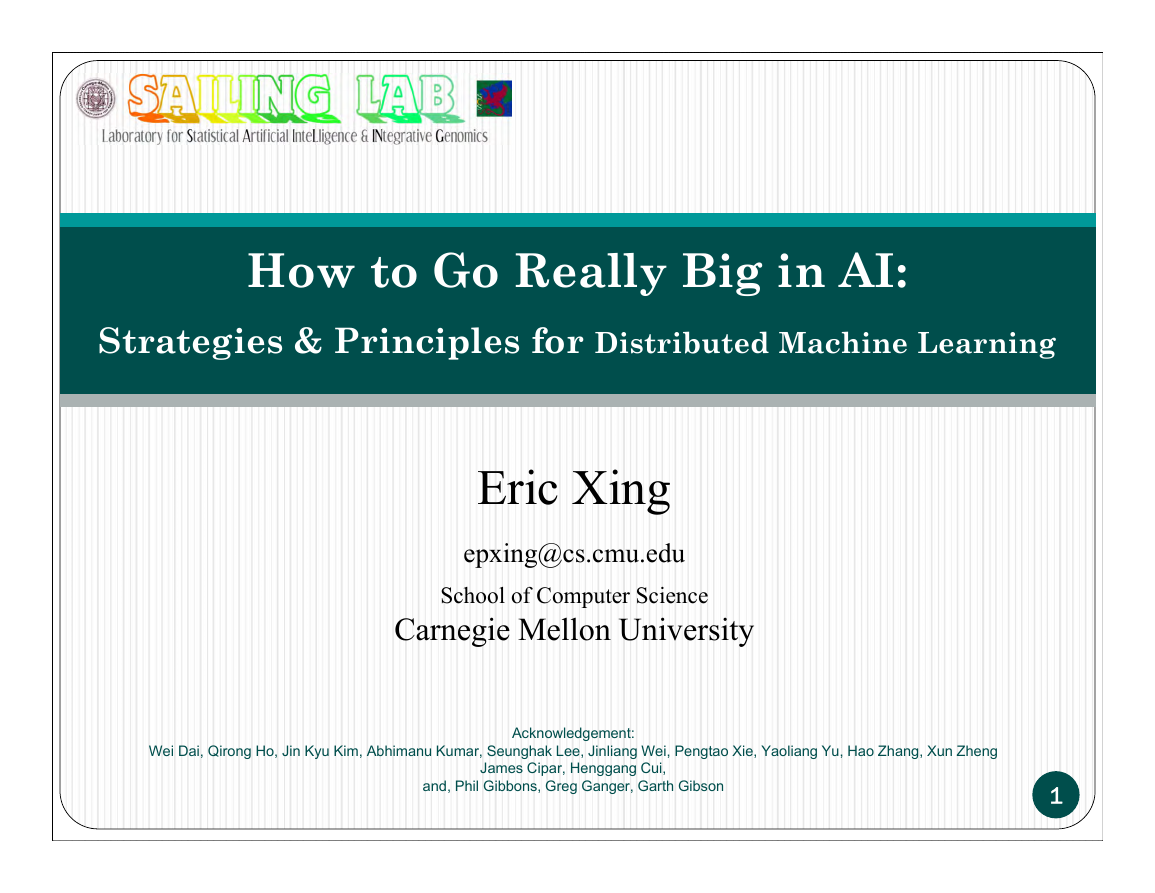
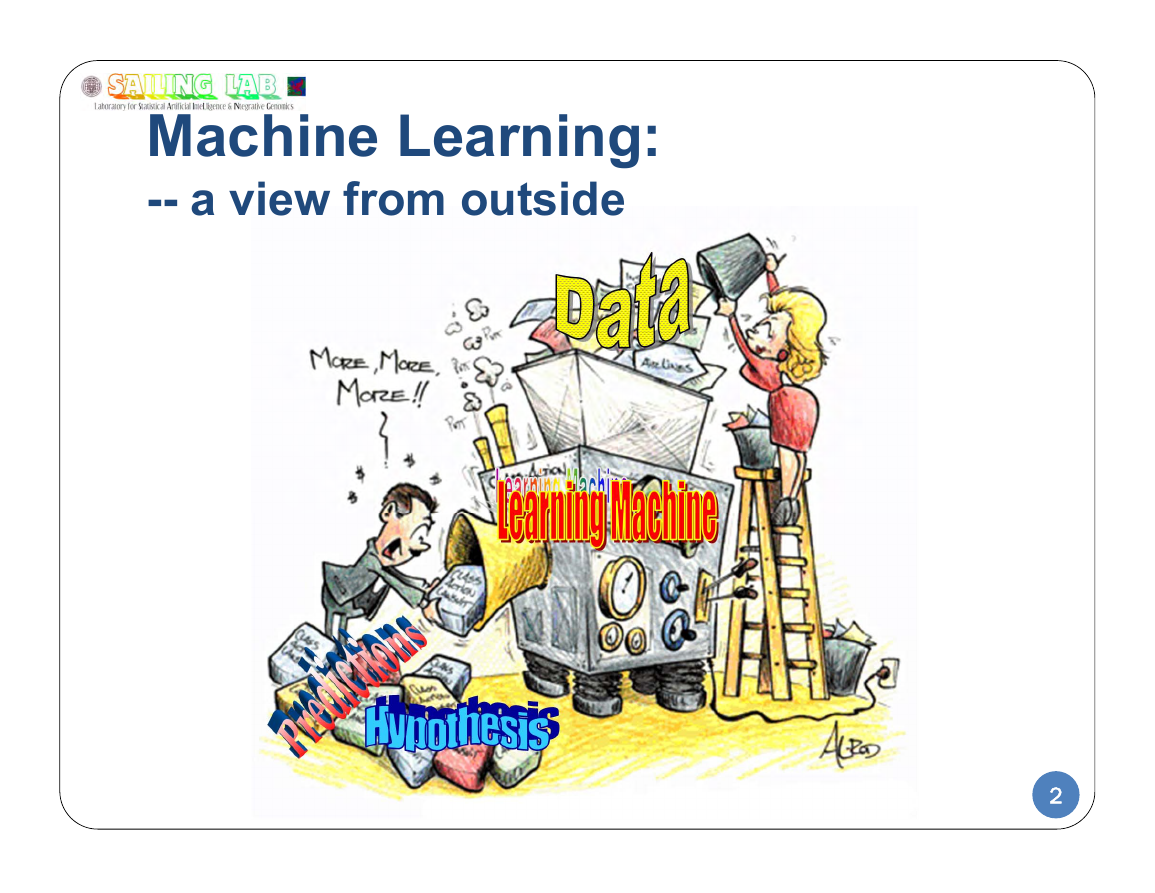
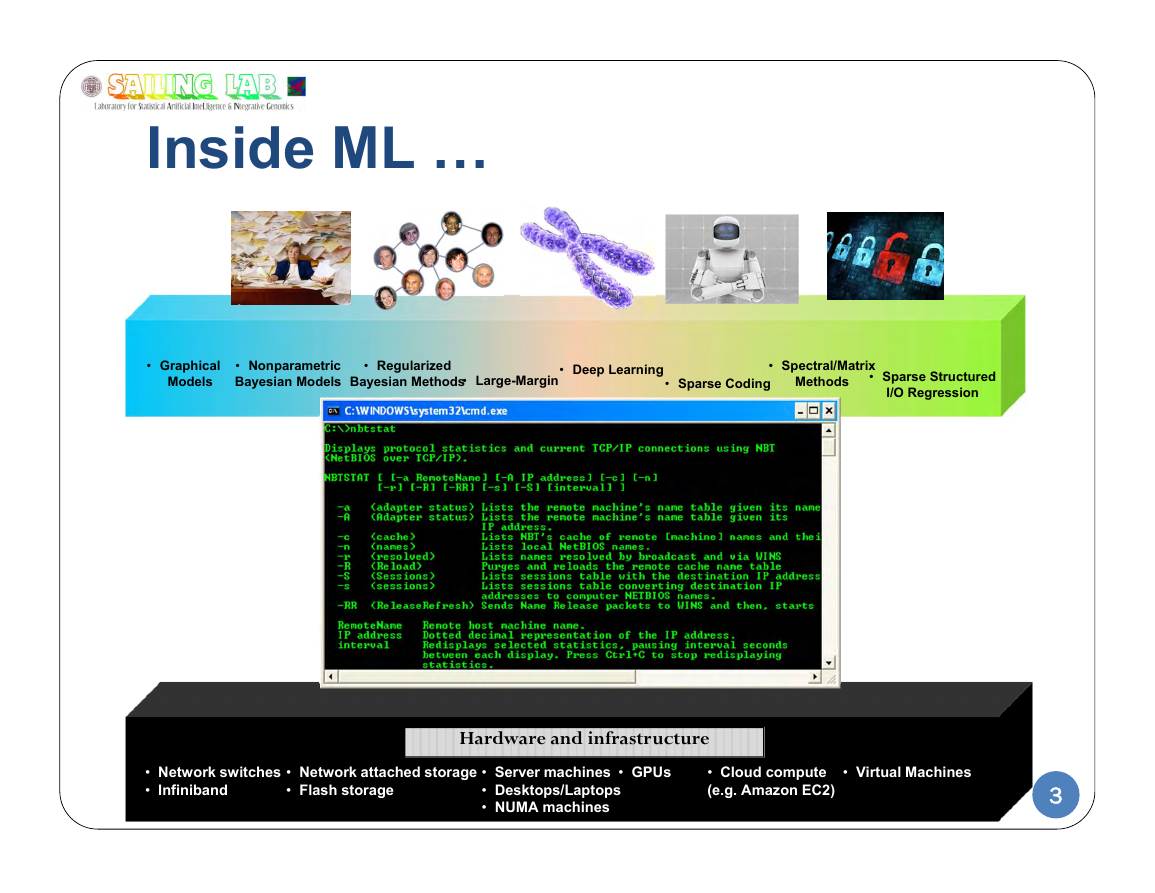
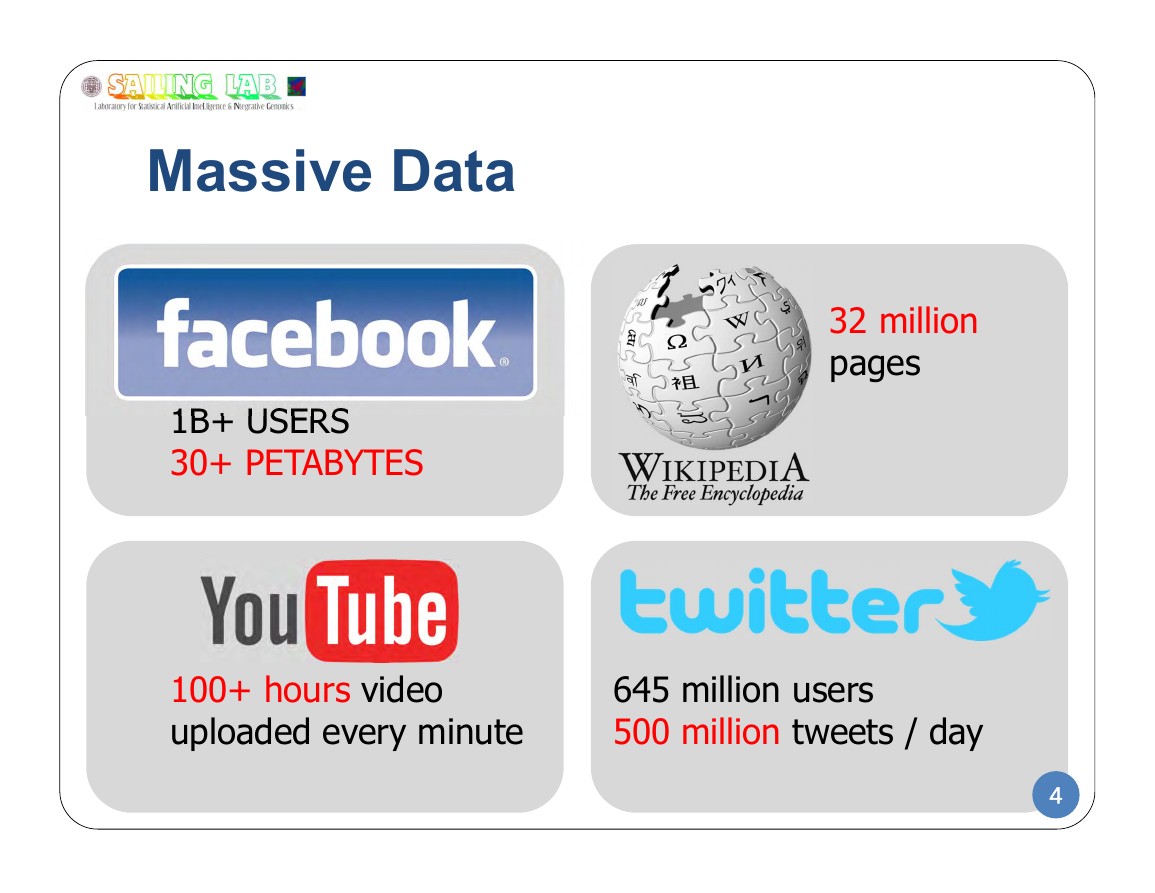
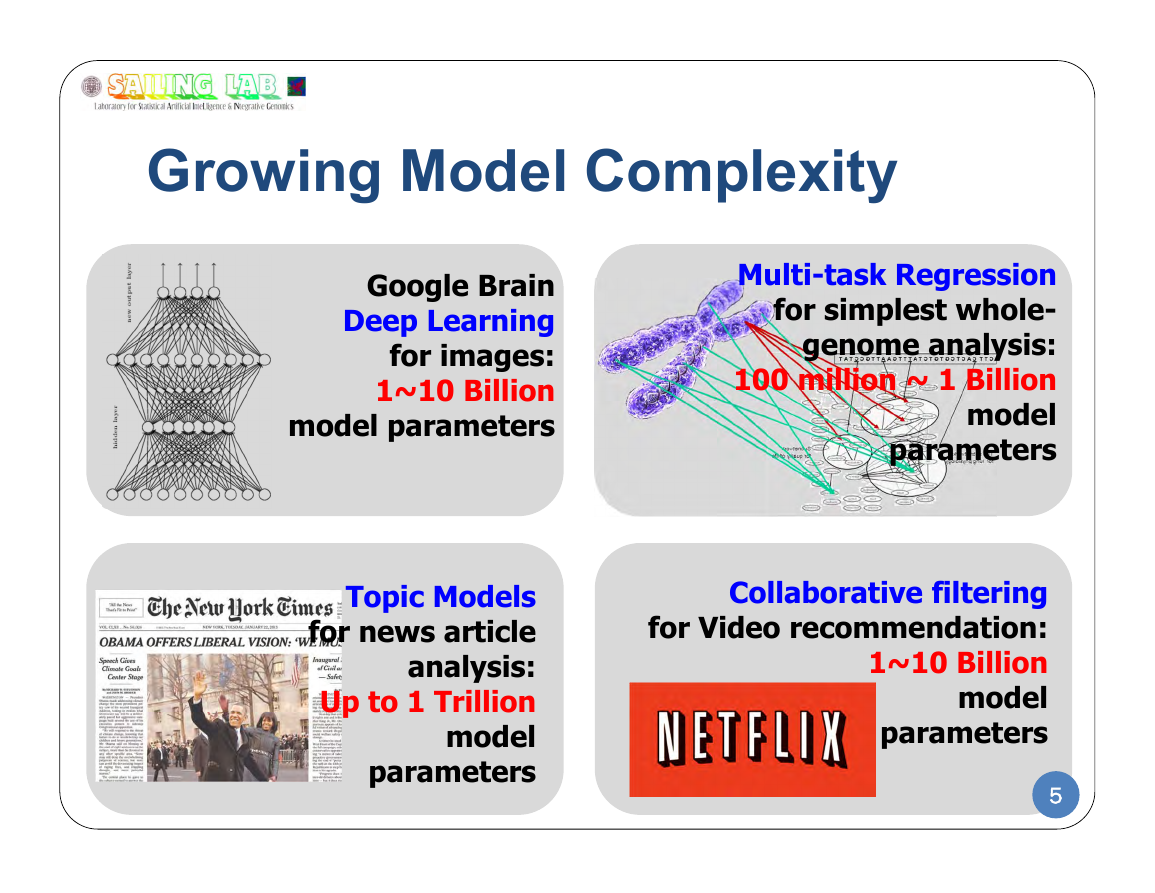
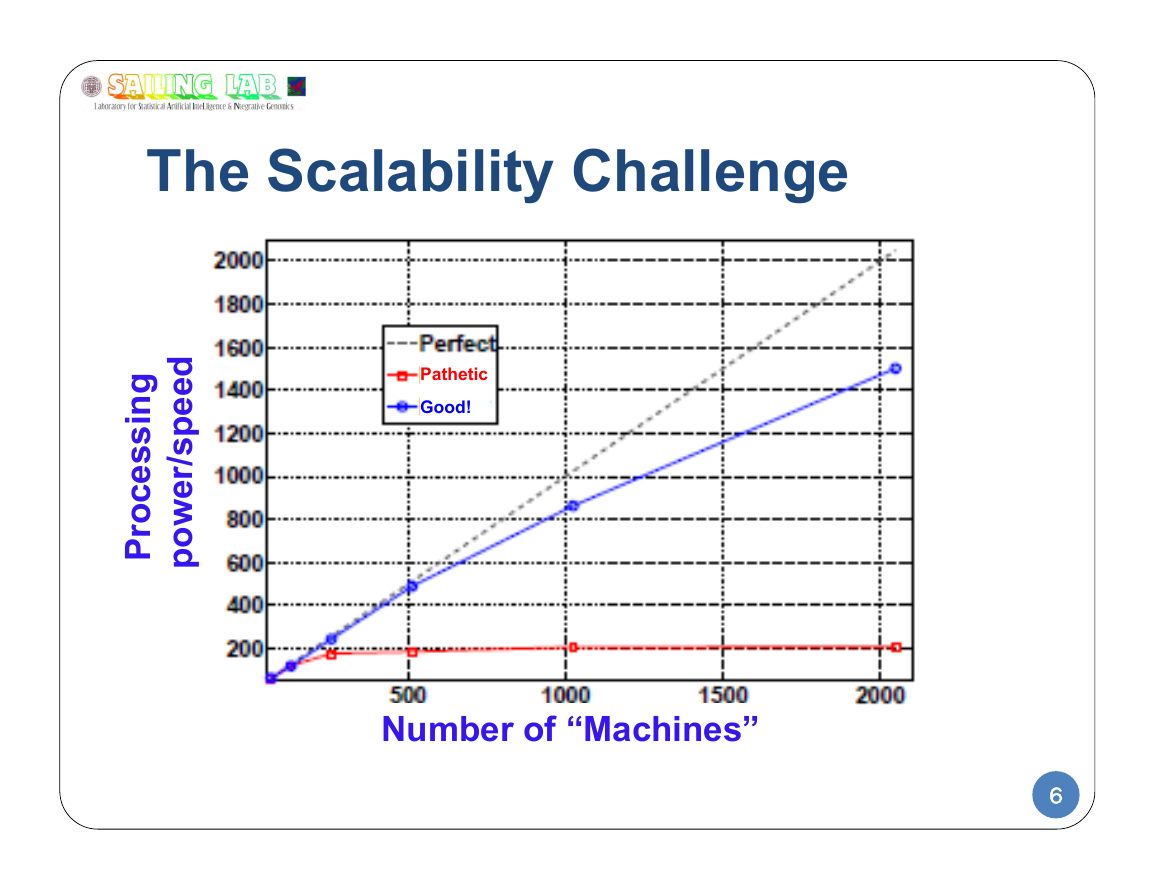
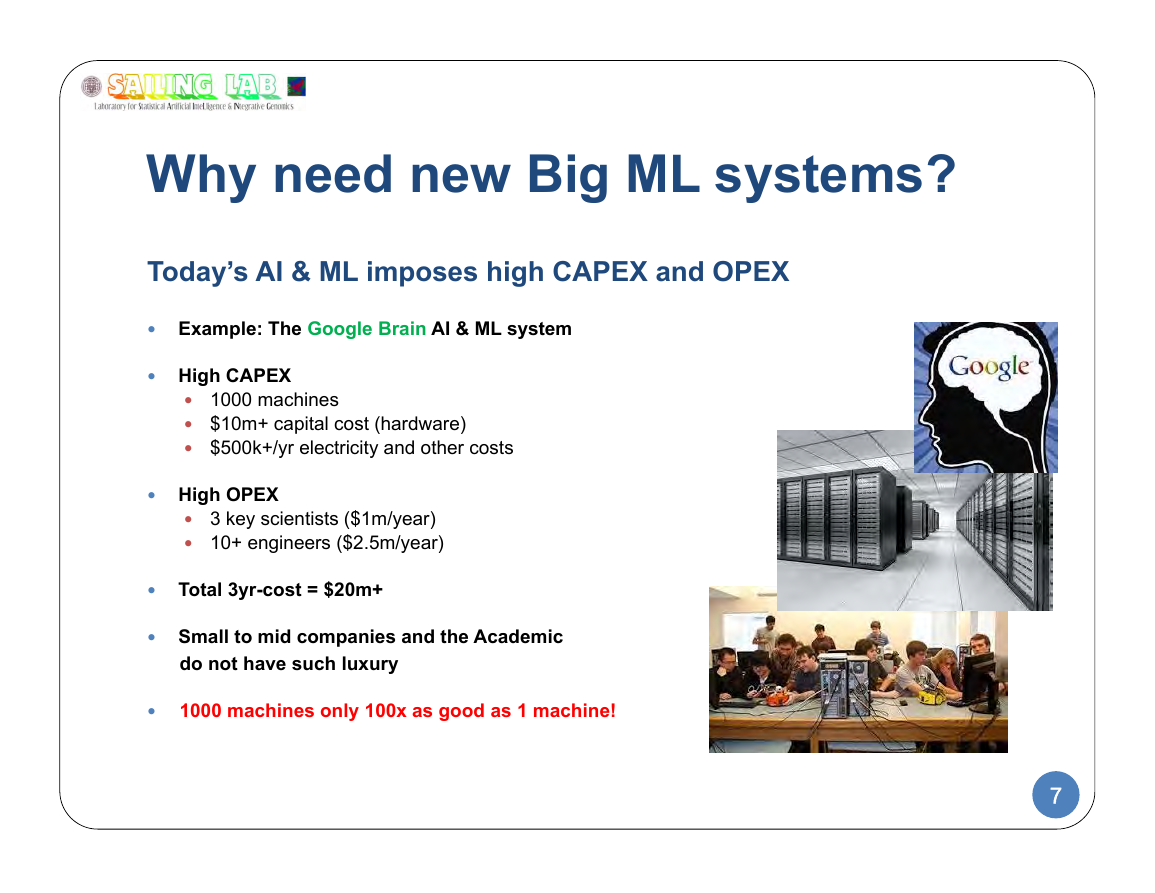
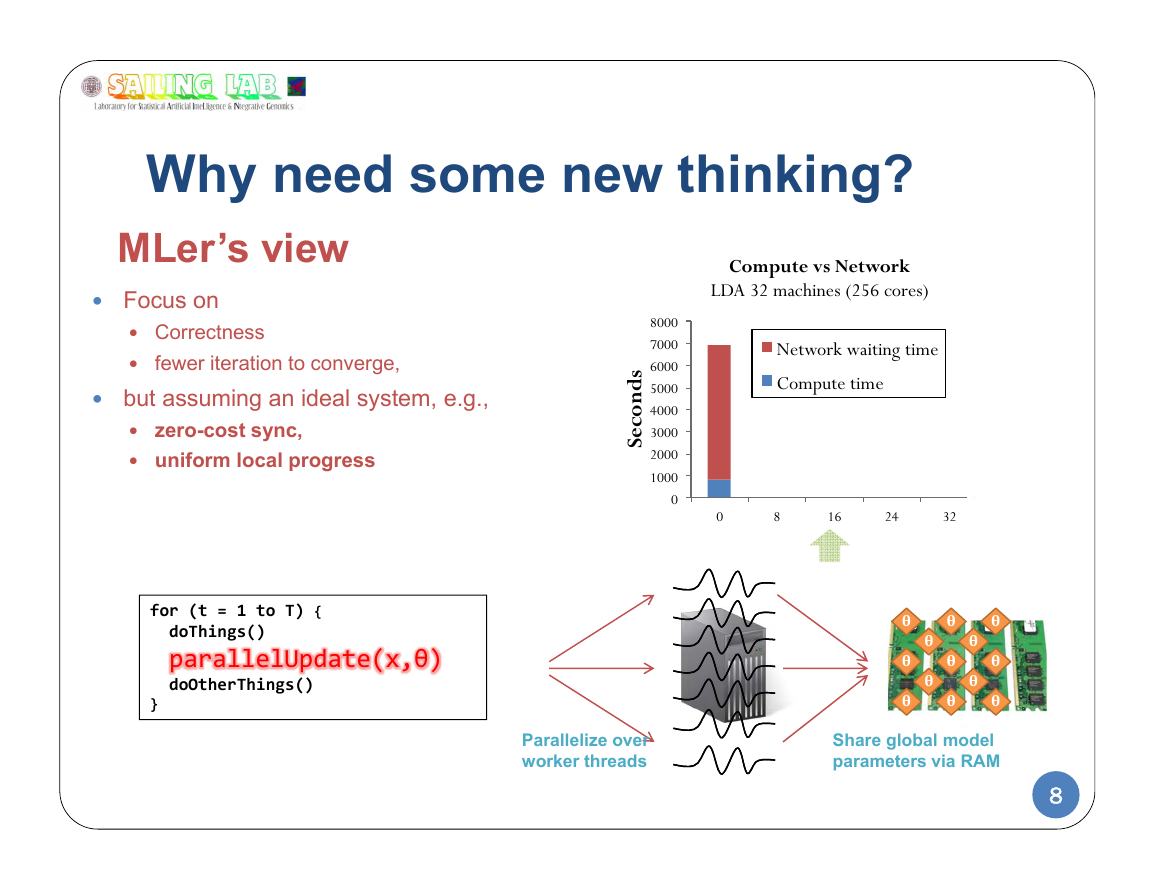








 2023年江西萍乡中考道德与法治真题及答案.doc
2023年江西萍乡中考道德与法治真题及答案.doc 2012年重庆南川中考生物真题及答案.doc
2012年重庆南川中考生物真题及答案.doc 2013年江西师范大学地理学综合及文艺理论基础考研真题.doc
2013年江西师范大学地理学综合及文艺理论基础考研真题.doc 2020年四川甘孜小升初语文真题及答案I卷.doc
2020年四川甘孜小升初语文真题及答案I卷.doc 2020年注册岩土工程师专业基础考试真题及答案.doc
2020年注册岩土工程师专业基础考试真题及答案.doc 2023-2024学年福建省厦门市九年级上学期数学月考试题及答案.doc
2023-2024学年福建省厦门市九年级上学期数学月考试题及答案.doc 2021-2022学年辽宁省沈阳市大东区九年级上学期语文期末试题及答案.doc
2021-2022学年辽宁省沈阳市大东区九年级上学期语文期末试题及答案.doc 2022-2023学年北京东城区初三第一学期物理期末试卷及答案.doc
2022-2023学年北京东城区初三第一学期物理期末试卷及答案.doc 2018上半年江西教师资格初中地理学科知识与教学能力真题及答案.doc
2018上半年江西教师资格初中地理学科知识与教学能力真题及答案.doc 2012年河北国家公务员申论考试真题及答案-省级.doc
2012年河北国家公务员申论考试真题及答案-省级.doc 2020-2021学年江苏省扬州市江都区邵樊片九年级上学期数学第一次质量检测试题及答案.doc
2020-2021学年江苏省扬州市江都区邵樊片九年级上学期数学第一次质量检测试题及答案.doc 2022下半年黑龙江教师资格证中学综合素质真题及答案.doc
2022下半年黑龙江教师资格证中学综合素质真题及答案.doc